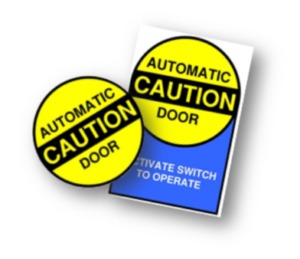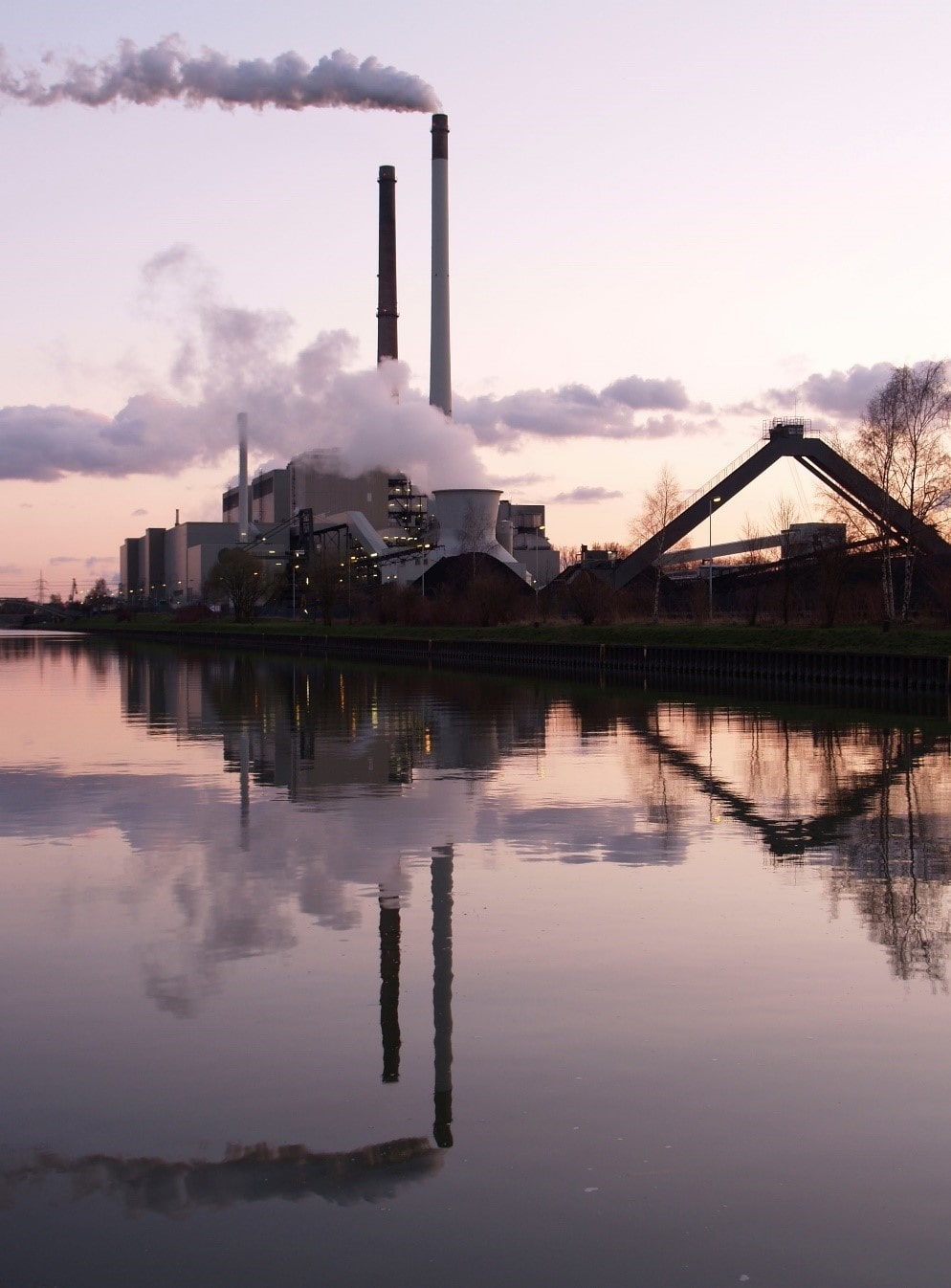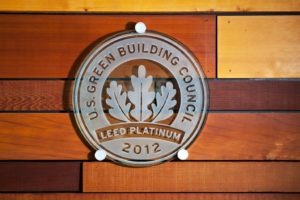 AeroBarrier is touted as the best route to never fail another blower door test. The technology, which involves pressurizing a space with a blower door fan while misting a water-based glue into the air from multiple points throughout the space, is most often being used on new multifamily buildings after drywall is installed. SWA first experimented with the technique on the Cornell Tech high-rise building. Back in March, I reached out to Yudah Schwartz at SuperSeal Insulation, Inc. about a personal project, the gut rehab of a 2,500 SF detached single family home. While renovations aren’t something they normally do, Yudah and his team agreed to try a demo. Here’s what happened.
AeroBarrier is touted as the best route to never fail another blower door test. The technology, which involves pressurizing a space with a blower door fan while misting a water-based glue into the air from multiple points throughout the space, is most often being used on new multifamily buildings after drywall is installed. SWA first experimented with the technique on the Cornell Tech high-rise building. Back in March, I reached out to Yudah Schwartz at SuperSeal Insulation, Inc. about a personal project, the gut rehab of a 2,500 SF detached single family home. While renovations aren’t something they normally do, Yudah and his team agreed to try a demo. Here’s what happened.
AeroBarrier: A New Tool for Gut Rehabs?
The Numbers Are In! NYC Passive House Performance Data
In a collaborative effort that merged financing and energy use analysis, the New York City Passive House industry finally has performance data. Working together with Bright Power, The Community Preservation Corporation, and NYC Department of Housing Preservation & Development, this analysis is the first of its kind.
Why does this matter?
Energy Use Intensity (EUI) measures energy consumption on a per square foot basis to compare buildings and allows interested parties to gauge one building’s usage to another (or to a group of buildings with a similar use type). The study team compared the actual EUI of six completed Passive House-certified and Passive House-like buildings against recently completed multifamily code-built buildings. Information was gleaned from the EnergyScoreCards database and the Passive House (PH) target. The weather normalized data indicates the Passive House and Passive House-like buildings are performing much better than the comparable code-built group, but are not quite as efficient as the Passive House threshold. Industry leaders have recognized this performance gap – between predictive assumptions that rely on standardized patterns of use and the real-life habits of actual people living in the building. This gap has been a hot topic at the past several New York Passive House conferences. The results from the current analysis provide a starting point now, so the industry can focus on strategies to continue to reduce EUIs.
Transportation in Cities with Zak Accuardi
The transportation sector poses significant opportunities for and challenges to reducing US greenhouse gas emissions as the Country’s highest-emissions sector. As a result of stay-at-home orders issued in March and April in cities and states across the US, we’ve seen a visible difference in smog in part due to less driving. Streets in cities also comprise more than 30 percent of all land in many cities, and therefore more than 80 percent of public space. Yet for much of the past century, we’ve been designing them to prioritize moving cars quickly, which is neither safe nor efficient. What if we designed streets with different priorities and invested in high-quality public transportation?
In this month’s episode, Kelly and our guest, Zak Accuardi, discuss the attributes of public transit service that make it possible and desirable for people to use transit more, and why this can be so impactful in US cities today.
Trends in Healthcare: Charging Stations
“Trends in Healthcare” is a recurring series that focuses on exciting new designs and technologies we’re seeing in healthcare projects and provides best practices on how to ensure that these latest trends are accessible to persons with disabilities. We build on the wealth of knowledge we gain from working with healthcare design teams, construction crews, and practitioners to provide practical solutions for achieving accessible healthcare environments.
Anyone who has ever had to take a trip to the hospital knows how much time is often spent in the waiting room. As a result, our experience in that space can shape our perception of the entire visit. In fact, studies have shown that a visitor’s impression of the waiting room itself contributes significantly to the likelihood of a return visit.[1] The length of wait times can vary – from a relatively short wait for a screening, to an average of 40 minutes in emergency departments, to the better part of a day if you are waiting for a family member to receive treatment.[2] As healthcare providers strive to remove pain points within the patient experience, they are turning to a number of design strategies to help create a more pleasant waiting room experience. One of these strategies is to ensure that patients and visitors have access to electrical outlets.
Leveraging LEED for New Construction Post-COVID Part 2
LEED: Toolkit for a Healthy and Resilient Post-COVID Built Environment
At SWA, we have used LEED across a wide range of projects and contexts. We have seen firsthand its strength as an adaptable toolkit for guiding high performance building design, construction, and operation. The intent of each LEED credit category takes on a particular meaning, both locally and globally, in response to the emergence of such factors as global climate change and its associated consequences—including pandemics. In the post-COVID context, these intents will take on new meaning and new urgency. Read Part 1 of this blog here!
The overall goal of the LEED rating system is to reduce the negative impacts of the built environment on environmental and human health. Ideally, this focus contributes to our general, overall resilience to public health crises such as the COVID-19 pandemic by reducing and mitigating various factors that make us more vulnerable to diseases. For example, we know that long-term exposure to air pollution and poor air quality dramatically increases the chances of dying from COVID-19 and that most of the same pre-existing conditions that increase the risk of death for COVID-19 are the same diseases exacerbated by exposure to air pollution. Anything we can do to improve air quality will also improve our resilience to disease. Most significantly, we need to move away from fossil fuel-based energy and toward clean, renewable energy—and a large portion of LEED is focused on doing just that.
As researchers have noted, many of the root causes behind climate change also contribute to a greater risk of pandemics. An example is deforestation and associated habitat loss, which forces wildlife to migrate, bringing novel viruses into closer contact with livestock and humans, and increasing the odds of disease transmission. On top of that, by altering temperature and rainfall patterns, climate change has created conditions that are more conducive to the spread of disease in general. So, the strategies we need to enact now to address the climate crisis—many of which are addressed in LEED credits—can also mitigate the occurrence, scale, and impacts of future disease outbreaks.
Accessibility Tech Notes: Automatic Doors
 As the country continues to confront the realities of the COVID-19 pandemic, the way we navigate spaces is changing. One of these changes is the way we interact with common use objects that traditionally require hand-operation, like doors. While automatic doors have always been a good option for providing greater access to people with disabilities, hygiene concerns associated with the spread of disease have presented another argument for their use. The rise of touchless technology as a result of this pandemic will increase the use of automatic doors not just for accessibility or convenience, but for public health as well. For anyone considering incorporating automatic doors into their designs, either for new construction or as a retrofit, here are some important things to consider:
As the country continues to confront the realities of the COVID-19 pandemic, the way we navigate spaces is changing. One of these changes is the way we interact with common use objects that traditionally require hand-operation, like doors. While automatic doors have always been a good option for providing greater access to people with disabilities, hygiene concerns associated with the spread of disease have presented another argument for their use. The rise of touchless technology as a result of this pandemic will increase the use of automatic doors not just for accessibility or convenience, but for public health as well. For anyone considering incorporating automatic doors into their designs, either for new construction or as a retrofit, here are some important things to consider:
Leveraging LEED for New Construction Post-COVID Part 1
In the post-COVID world, there needs to be a greater awareness that the built environment can protect and promote human and environmental health. Buildings can, and must, play a critical role in delivering a stronger, more resilient public health infrastructure that can help prevent and mitigate crises such as the SARS-CoV-2 pandemic. The good news is that we already have effective tools for designing, constructing, and operating such buildings—chief among them LEED and the WELL Building Standard.
We believe people are now more conscious of how the built environment affects their health. As a result, we’re likely to see an increase in investment in sustainable building design, construction, and operation and a corresponding increase in demand for green building rating systems such as LEED and WELL. We may also see the green and healthy building concepts that are included in these systems increasingly integrated into building codes.
Certification programs (e.g., LEED and WELL) have been developed though collective effort. They are extremely effective and adaptable tools that project teams can use to ensure that their buildings achieve the best possible performance in terms of protecting environmental and human health. Importantly, these programs continue to evolve, offering ever more effective strategies for improving the built environment, ensuring that buildings adapt to whatever circumstances may arise in uncertain times. But right now, project teams can make immediate use of LEED and WELL, and similar tools, to start preparing for the new reality ushered in by the COVID-19 pandemic.How can project teams leverage LEED now? In this series, we’ve highlighted the LEED credits that can be used to guide efforts to make our buildings safe, healthy, and resilient. (In a follow-up series we’ll discuss the WELL features that can be used to guide our post-COVID building work.)
Training a Young Workforce to Operate Smart Buildings with Jonathan Spooner from Stacks + Joules
As technology in the built environment increases, the workforce demand for those who can properly operate these buildings also grows. On today’s episode, Kelly talks with Jonathan Spooner from Stacks + Joules, a nonprofit learning program in computer programming and wireless network management. Stacks + Joules helps train and employ young people to have careers in building automation and energy management systems. Kelly and Jon discuss a common gap in the industry – job training and workforce development, particularly for building operators. They consider how we can “leverage the genius that exists” in urban schools, lift out the digital gurus who know about networking and technology, and help transition them into the building industry where they can thrive.
Interesting Elements: A Modeling View on Net Zero Homes
I recently performed some net zero energy modeling on a single-family home for work. Around the same time, I got to chatting with my neighbor (mindful of social distancing) and when I mentioned net zero, he said, “Is that even possible?” AH! Get the word out. We have the means to offset our home energy use. What follows are the basics to consider when trying to fully offset home energy along with a breakdown of how different upgrades can affect energy use.
There are lots of resources available on how to reduce home energy use. You can look at program requirements and guidelines like the Zero Energy Ready Program or Passive House. Through modeling I will demonstrate how the energy use numbers change and describe what we have seen in real-world examples of net zero homes. Net zero is not new and we’ll be looking at some specific pieces of single family home modeling.
Universal Design and Accessibility in Mexico City with Luis Quintana
April was Fair Housing Month – a time to recognize the importance of equal access to housing. As we celebrate the milestones we have made, we are committed to furthering equal access for every person – regardless of race, gender, nationality, socio-economic status, disability, etc. On this month’s Buildings + Beyond episode, we interview Luis Quintana to hear more about Universal Design and accessibility in Mexico City. We discuss who Universal Design is meant to help, and how Universal Design principles can allow equal access to buildings and products for everyone. (more…)


